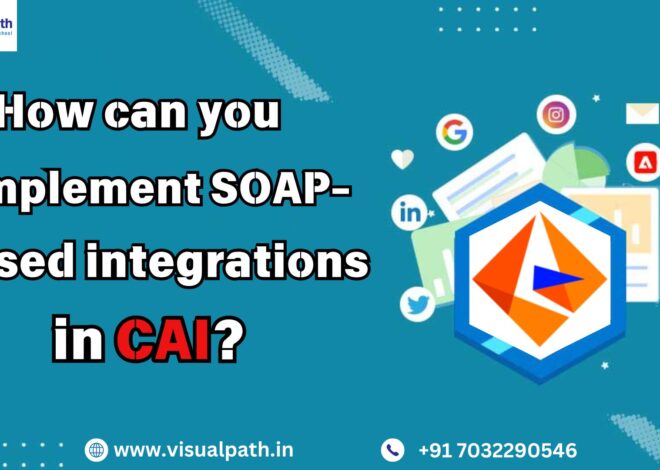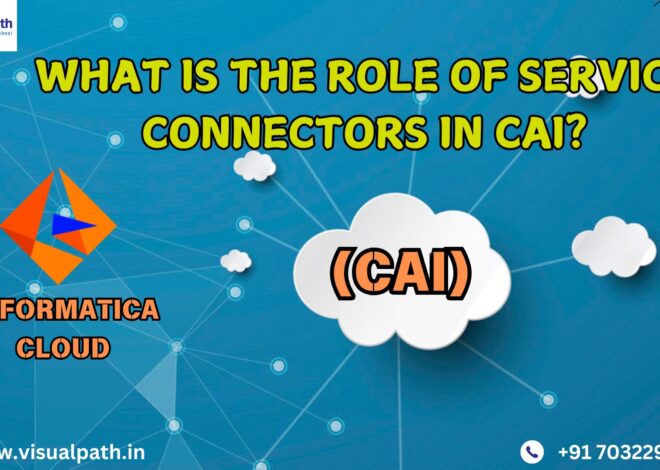Cloud application integration involves linking different cloud-based applications, services, and on-premises systems to enable them to work together cohesively. This integration ensures data consistency, process automation, and real-time information flow across diverse platforms, enhancing overall business efficiency and agility. Informatica Online Training
Key Components of Cloud Application Integration
- Middleware: Middleware acts as an intermediary layer that facilitates communication and data exchange between different applications. It provides the necessary protocols and APIs (Application Programming Interfaces) to connect and synchronize various systems.
- APIs and Web Services: APIs are essential for cloud integration, allowing applications to interact with each other by defining the methods and data structures required for this communication. Web services, which are specific types of APIs, enable interoperability between web-based applications. Informatica Training Institutes in Hyderabad
- Data Integration Tools: These tools extract, transform, and load (ETL) data from one system to another, ensuring that information is accurately and efficiently moved and transformed to meet the requirements of different applications.
- Integration Platforms as a Service (iPaaS): iPaaS solutions provide a cloud-based platform for developing, deploying, and managing integration flows. These platforms simplify the integration process by offering pre-built connectors, drag-and-drop interfaces, and monitoring capabilities.
Benefits of Cloud Application Integration
- Enhanced Efficiency and Productivity: By automating data flows and processes between applications, integration reduces manual effort and minimizes errors. This leads to higher efficiency and productivity as employees can focus on more strategic tasks.
- Improved Data Consistency and Accuracy: Integration ensures that data is consistently updated across all systems, eliminating discrepancies and ensuring that everyone in the organization has access to the same accurate information.
- Scalability and Flexibility: Cloud integration enables businesses to scale their operations seamlessly by adding new applications and services without disrupting existing workflows. This flexibility is crucial for adapting to changing business needs. Informatica Cloud Data Integration Training
- Cost Savings: By optimising processes and reducing the need for manual data handling, cloud integration can lead to significant cost savings. Moreover, it can lower IT overhead by simplifying system maintenance and reducing the need for custom coding.
- Enhanced Customer Experience: Integrated applications provide a unified view of customer data, allowing businesses to offer more personalised and responsive services. This leads to improved customer satisfaction and loyalty.
Challenges in Cloud Application Integration
- Complexity of Integration: Integrating multiple applications with different architectures, data formats, and protocols can be complex and time-consuming.
- Data Security and Compliance: Ensuring the security of data as it moves between applications and meets compliance requirements is a critical challenge in cloud integration.
- Performance Issues: Poorly designed integrations can lead to latency and performance issues, impacting the overall efficiency of business processes.
- Vendor Lock-In: Depending on specific vendors for integration tools or platforms can lead to vendor lock-in, limiting flexibility and increasing costs in the long run. Informatica Cloud Online Training
Best Practices for Successful Cloud Application Integration
- Define Clear Integration Goals: Start with a clear understanding of what you aim to achieve with integration, such as specific business outcomes or performance improvements.
- Choose the Right Tools and Platforms: Select integration tools and platforms that align with your technical requirements and business objectives. Consider scalability, ease of use, and support for various protocols.
- Ensure Data Governance: Implement strong data governance policies to maintain data quality, security, and compliance across integrated systems.
- Monitor and Optimize: Continuously monitor integration processes to identify and resolve issues promptly. Optimize workflows to enhance performance and efficiency.
- Leverage Expertise: Engage with integration specialists or consultants to navigate the complexities of cloud application integration and ensure a successful implementation.
In conclusion, cloud application integration is vital to modern business operations, enabling seamless communication and data exchange between diverse applications. By embracing integration, businesses can enhance efficiency, scalability, and customer satisfaction while navigating the associated challenges with informed strategies and best practices. IICS Training in Hyderabad
Visualpath is the Best Software Online Training Institute in Hyderabad. Avail complete Informatica Cloud worldwide. You will get the best course at an affordable cost.
Attend Free Demo
Call on – +91-9989971070
WhatsApp: https://www.whatsapp.com/catalog/919989971070
Visit https://www.visualpath.in/informatica-cloud-training.html




